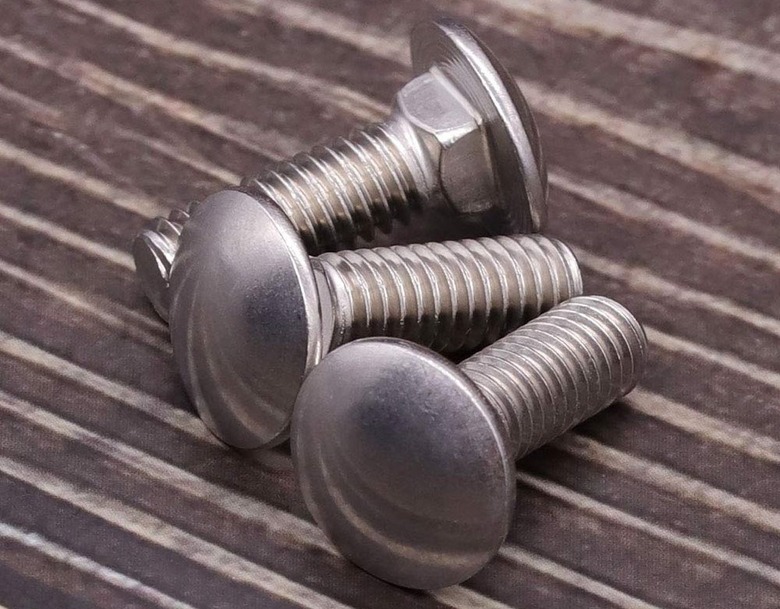How To Make A Square Hole For A Carriage Bolt
Everybody knows you can't put a square peg in a round hole, and when you're using carriage bolts to secure metal plates to each other or to wood, that's a bit of common sense you can't ignore. There's no such thing as a square carriage bolt drill bit.
A carriage bolt has a domed head with no screwdriver slot, and just underneath the head and attached to it is a square nut of a length and width approximately equal to the diameter of the bolt. The design prevents the head from turning when you tighten the nut onto the other end of the bolt.
When using a carriage bolt to attach wood, you don't have to worry about making the hole square because the torque you apply to tighten the nut draws the square part of the bolt head into the wood. Things are different when using a bolt on metal, such as when you want to attach brackets to a fence post or a rack to the back of your pickup. You need to square the hole, and there are two ways to do this.
Method 1: Use a File
The most obvious solution to this problem is to use a flat file to square a round hole that you bore with a drill. Depending on the thickness of the metal, this can be time-consuming and difficult, but there is a way to make it easier.
You first need to drill a hole large enough for the bolt to fit. When you're using a wide bolt, such as 3/8 inch or larger, it's usually easiest to start by making a small hole and then use progressively larger bits to widen it until it's the right size. After making the hole, turn the metal over and from the reverse side, drill a countersink approximately halfway through the metal using a bit that is one or two sizes larger than the carriage bolt hole size. This reduces the amount of metal you have to file away to make the hole square.
Once you've drilled the countersink, use a file with the same width as the nut on the head of the bolt to file each side of the hole square. Once you're finished, the head should fit inside the hole, and you're ready to tighten on the nut.
Method 2: Use Heat and Impact
An easier method to square a round hole for a carriage bolt is to pound the head into a predrilled hole with a hammer.
Start by drilling a hole in the metal that is the same diameter as the bolt shank. When you're finished, heat the metal with a propane torch until it's red hot and then insert the bolt and pound the head into the metal with a hammer. The nut will automatically square the hole as you pound. When the bolt is completely seated, you can pound it back out from the other side so you can position the metal where you need it for attachment.
This method will work with painted metal, but it may burn off some of the paint, so wear a respirator and goggles when applying heat and be prepared to touch up the paint when you're finished.
Carriage Bolt Drill Bit With Wood
You don't usually need to square the hole when using a carriage bolt with wood because the square head sinks into the wood to lock the bolt as you tighten the nut from the other end. When the bolt is tightened all the way down, the bottom of the domed head should sit flush against the surface of the wood.
If you want to sink the head below the wood surface, you have to counterbore. This is like countersinking except you make a flat-bottomed depression with a spade bit or Forstner bit rather than a cup-shaped depression with a regular drill bit. Start by drilling the counterbore using a bit with the same diameter as the bolt head and when it's at the proper depth, drill the hole for the shank in the middle of the depression. Now, when you tighten down the bolt, the head will sink below the wood surface, and you can even fill the hole to cover the head if you want.
